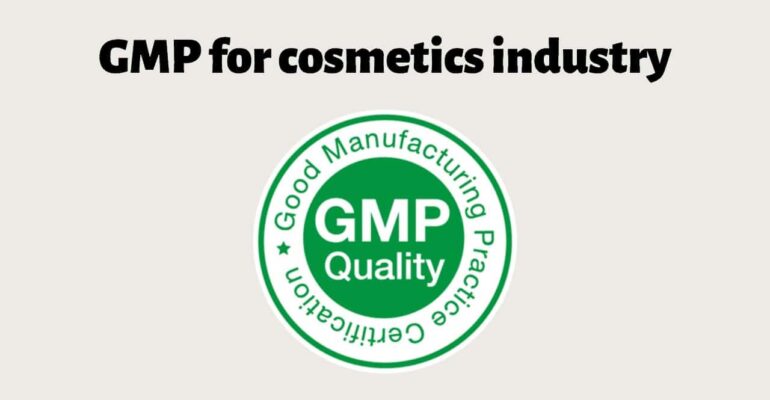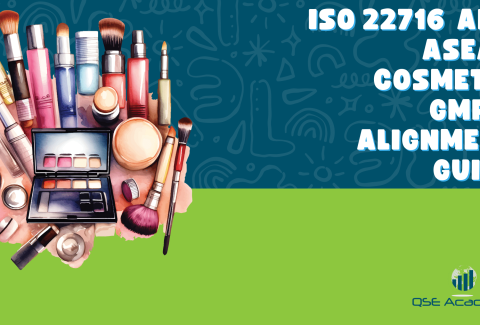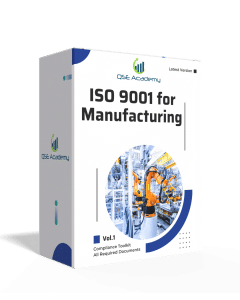GMP standard for cosmetics
Last Updated on October 24, 2025 by Hafsa J.
GMP Standard for Cosmetics
If you’ve ever wondered how your favorite cosmetics brands ensure their products are safe, high-quality, and consistent, the answer lies in the GMP standard. Short for Good Manufacturing Practices, this globally recognized guideline helps cosmetics manufacturers create products you can trust.
Think of the GMP standard as a set of golden rules for cosmetics manufacturing. It ensures that every product, from lipsticks to lotions, is made in a clean, controlled environment where safety and quality are top priorities. These practices cover every step of the process, from sourcing raw materials to packaging the final product.
Why is the GMP Standard Important?
Imagine buying a skincare product without knowing if it was made in a hygienic facility or if the ingredients were properly tested. That uncertainty is exactly what the GMP standard aims to eliminate. By following these practices, manufacturers can:
- Minimize contamination risks during production.
- Ensure consistent quality across all batches.
- Build trust with customers and regulators.
The GMP standard isn’t just about following rules—it’s about creating products that make consumers feel confident and safe.
GMP: A Global Benchmark for Cosmetics
One of the best things about the GMP standard is its global recognition. It’s widely accepted as the foundation for safe manufacturing practices, making it a must-have for any cosmetics brand looking to expand into international markets.
For example, compliance with the GMP standard is often a legal requirement in regions like the European Union and ASEAN. Meeting these standards not only ensures safety but also opens the door to new opportunities, helping your brand reach a broader audience.
The GMP standard is more than just a guideline—it’s a commitment to excellence. Whether you’re a startup or an established brand, adopting these practices sets you on the path to creating cosmetics that consumers trust and love. And that’s a win for everyone!
Key Elements of the GMP Standard for Cosmetics
When it comes to manufacturing cosmetics, the GMP standard is your go-to guide for ensuring everything runs smoothly, safely, and efficiently. It’s not just about following rules—it’s about creating a system that guarantees consistent quality and protects consumers. Let’s break down the key elements of the GMP standard and why they matter.
1. Personnel and Hygiene
People are at the heart of cosmetics manufacturing, and the GMP standard places a strong emphasis on their role. Ensuring that employees are properly trained and follow hygiene practices is crucial for maintaining product safety.
Here’s what it involves:
- Training: Staff must be trained in Good Manufacturing Practices, including how to handle raw materials and avoid contamination.
- Hygiene: Employees should wear protective clothing, follow handwashing protocols, and avoid direct contact with raw materials or finished products.
- Responsibility: Everyone should understand their specific role in maintaining compliance with the GMP standard.
2. Facilities and Equipment
Clean, well-maintained facilities and equipment are essential for meeting the GMP standard. Why? Because even the smallest lapses in cleanliness or functionality can compromise product safety.
Facility Requirements:
- Layouts should minimize risks of contamination, with separate areas for raw materials, production, and storage.
- Ventilation systems must ensure proper airflow to prevent cross-contamination.
Equipment Standards:
- Regular cleaning and maintenance are non-negotiable.
- Machines should be calibrated and in top working condition to ensure consistency.
3. Raw Materials and Packaging
The GMP standard doesn’t stop at the production line—it starts with the ingredients and materials you use. This ensures that every product is built on a solid foundation.
Raw Materials:
- Ingredients must be inspected and tested to meet quality standards.
- Storage conditions, like temperature and humidity, should protect the integrity of materials.
Packaging:
- Materials must shield the product from contamination and preserve its quality.
- Proper labeling is key to ensuring consumers use the product safely.
4. Documentation and Record-Keeping
If there’s one mantra in the GMP standard, it’s this: “If it’s not documented, it didn’t happen.” Keeping detailed records ensures traceability, consistency, and compliance.
Key Documents Include:
- Batch production records to track how each product is made.
- Cleaning logs for equipment and facilities.
- Supplier records to verify the quality of raw materials.
Good documentation isn’t just about meeting requirements—it’s a safety net for your business in case of audits or recalls.
5. Quality Control and Testing
Last but certainly not least, the GMP standard emphasizes rigorous quality control at every stage of production. This ensures that only safe, high-quality products make it to the shelves.
Quality Control Steps:
- Testing raw materials before production begins.
- Conducting in-process checks to catch issues early.
- Inspecting finished products to ensure they meet specifications.
By following these practices, you’re not just meeting the GMP standard—you’re exceeding customer expectations for quality and safety.
Why These Elements Matter
The GMP standard isn’t just a set of rules—it’s a framework that helps you build trust, protect your customers, and create a reputation for excellence. Whether it’s training your staff, maintaining your facilities, or keeping detailed records, each element works together to ensure your cosmetics are safe, consistent, and market-ready.
And that’s what makes the GMP standard so powerful—it’s your recipe for success!
Benefits of Implementing the GMP Standard in Cosmetics
If you’re wondering why the GMP standard is such a big deal in the cosmetics industry, the answer lies in its benefits. Following these guidelines doesn’t just keep your products safe—it strengthens your entire business. Let’s explore the key advantages of implementing the GMP standard and how it can make a difference.
1. Ensuring Product Safety
At the core of the GMP standard is the commitment to creating safe products. This means ensuring that every step of the manufacturing process, from sourcing raw materials to packaging, prioritizes consumer health.
How it helps:
- Reduces the risk of contamination during production.
- Ensures that raw materials meet strict safety standards.
- Prevents harmful mistakes like mislabeled or improperly stored products.
By following these practices, you’re giving your customers the peace of mind they deserve.
2. Building Consumer Trust
In the cosmetics world, trust is everything. When customers see that your products are made according to the GMP standard, it tells them that your brand is serious about quality and safety.
Why it matters:
- Customers are more likely to choose brands they trust.
- Compliance with the GMP standard reassures consumers that your products are safe to use.
- A strong reputation for quality can lead to loyal, repeat customers.
Trust isn’t built overnight, but adhering to the GMP standard is a great way to start.
3. Streamlining Operations
The GMP standard isn’t just about meeting regulations—it’s also a powerful tool for improving efficiency. By standardizing your processes and keeping detailed records, you’ll create a system that’s easier to manage.
Benefits for your business:
- Fewer errors and inconsistencies in production.
- Clearer workflows that save time and reduce waste.
- Easier onboarding for new employees, thanks to well-documented procedures.
Efficient operations don’t just save money—they make your business more competitive.
4. Meeting Regulatory Requirements
For many regions, such as the European Union and ASEAN, compliance with the GMP standard is a legal requirement. By implementing these guidelines, you’re not only protecting your customers but also ensuring your business stays compliant.
How it helps:
- Avoid fines, recalls, or other penalties for non-compliance.
- Simplify the process of gaining approval to sell in regulated markets.
- Build credibility with regulators and industry partners.
Compliance isn’t just about following the law—it’s about opening doors to new opportunities.
5. Reducing Risks
Mistakes in manufacturing can be costly, both financially and reputationally. The GMP standard helps you minimize risks by creating a system that catches issues before they become bigger problems.
Key risk reductions include:
- Fewer product recalls due to contamination or defects.
- Faster identification and resolution of issues, thanks to thorough documentation.
- Stronger defenses against liability claims, as your compliance demonstrates due diligence.
By reducing risks, you’re protecting your bottom line and your brand’s image.
Why These Benefits Matter
Adopting the GMP standard isn’t just about ticking boxes—it’s about building a foundation for long-term success. From ensuring safety to gaining customer loyalty, every benefit works together to strengthen your business.
When you follow the GMP standard, you’re not just meeting industry expectations—you’re exceeding them. And in a competitive market like cosmetics, that makes all the difference.
Challenges in Meeting the GMP Standard for Cosmetics
Implementing the GMP standard for cosmetics can be transformative, but it’s not without its hurdles. For many manufacturers, the process of aligning their operations with these guidelines can feel overwhelming at first. The good news? Knowing what challenges to expect can help you tackle them head-on. Let’s dive into some of the most common obstacles and how you can overcome them.
1. Managing Extensive Documentation
One of the core components of the GMP standard is maintaining detailed records. From raw materials to quality control checks, every step needs to be documented accurately.
Why it’s a challenge:
- Keeping track of every batch, process, and test can feel like a monumental task.
- Incomplete or inconsistent records can lead to compliance issues.
How to overcome it:
- Invest in digital tools to streamline documentation and automate record-keeping.
- Use templates to standardize the way information is recorded.
- Train your team to understand the importance of thorough, accurate documentation.
2. Upgrading Facilities and Equipment
The GMP standard places a strong emphasis on clean, well-maintained facilities and equipment. For some manufacturers, meeting these requirements may require significant upgrades.
Why it’s a challenge:
- Facility redesigns or equipment replacements can be expensive.
- Ensuring compliance with hygiene standards requires constant vigilance.
How to overcome it:
- Start with a gap analysis to identify the most critical upgrades.
- Prioritize improvements that have the biggest impact on safety and compliance.
- Implement a maintenance schedule to keep equipment running smoothly.
3. Training and Engaging Staff
Your team plays a central role in implementing the GMP standard, but getting everyone on board can be tricky. Employees might resist changes or struggle to understand complex protocols.
Why it’s a challenge:
- Training programs require time and resources.
- It can be hard to maintain consistency if employees don’t fully understand their roles.
How to overcome it:
- Provide hands-on training that’s practical and easy to follow.
- Explain the “why” behind the GMP standard to help employees see its importance.
- Offer regular refresher courses to reinforce knowledge and address questions.
4. Ensuring Consistency Across Operations
Consistency is at the heart of the GMP standard, but maintaining it can be challenging, especially as your operations grow.
Why it’s a challenge:
- Variations in processes or procedures can lead to inconsistencies in product quality.
- Small lapses in quality control can have big consequences.
How to overcome it:
- Develop clear Standard Operating Procedures (SOPs) for every task.
- Conduct regular internal audits to identify and address inconsistencies.
- Use Key Performance Indicators (KPIs) to monitor compliance and track progress.
5. Financial Investment
Meeting the GMP standard requires an upfront investment, whether it’s for training, equipment upgrades, or hiring consultants. For smaller businesses, these costs can be a significant barrier.
Why it’s a challenge:
- Budgets may not accommodate immediate compliance needs.
- Long-term benefits can feel distant compared to short-term expenses.
How to overcome it:
- View compliance as an investment in your brand’s future.
- Apply for grants or funding programs that support quality and safety initiatives.
- Start small and scale your efforts gradually as resources allow.
Why These Challenges Are Worth Overcoming
While implementing the GMP standard might feel daunting, the benefits far outweigh the challenges. Each step you take brings you closer to creating safer, higher-quality products and building a brand that consumers trust.
Remember, every improvement you make is an investment in your business’s long-term success. By staying proactive, using the right tools, and focusing on continuous improvement, you’ll navigate these challenges and come out stronger on the other side. You’ve got this!
Steps to Successfully Implement the GMP Standard for Cosmetics
Implementing the GMP standard for cosmetics might seem overwhelming, but when you break it down into manageable steps, it becomes much more achievable. Whether you’re starting from scratch or refining existing processes, following these practical steps can set you on the path to success.
1. Conduct a Gap Analysis
Before diving into implementation, it’s essential to understand where your current processes stand compared to the GMP standard. This initial assessment will help you identify what’s already working and what needs improvement.
How to do it:
- Review your facilities, equipment, and processes against GMP guidelines.
- Highlight gaps in areas like hygiene, documentation, and quality control.
- Prioritize the most critical changes that will have the biggest impact on compliance.
A gap analysis is like creating a map—you can’t reach your destination without knowing where you’re starting from.
2. Develop Standard Operating Procedures (SOPs)
Consistency is key to meeting the GMP standard, and having clear Standard Operating Procedures (SOPs) is essential. These documents provide step-by-step instructions for every task, ensuring that everyone follows the same processes.
What to include in your SOPs:
- Cleaning and sanitization protocols for equipment and facilities.
- Handling and storage guidelines for raw materials and finished products.
- Procedures for conducting quality checks during production.
SOPs not only keep your operations consistent but also make training new employees much easier.
3. Train Your Team
Your employees are the backbone of your business, and their understanding of the GMP standard is crucial for successful implementation. Without proper training, even the best systems can fall short.
How to train effectively:
- Explain the “why” behind GMP to help employees see its value.
- Provide hands-on training for tasks like documentation, hygiene practices, and quality control.
- Offer refresher courses to ensure everyone stays up-to-date with changes or improvements.
A well-trained team isn’t just compliant—they’re also more confident and efficient in their roles.
4. Leverage Technology
Managing the documentation and processes required by the GMP standard can be time-consuming, but technology can simplify the process. Digital tools can help you stay organized, save time, and reduce errors.
How technology can help:
- Use compliance software to automate documentation and track progress.
- Implement digital batch records to streamline production tracking.
- Set up automated reminders for cleaning schedules, equipment maintenance, and audits.
Technology doesn’t just make compliance easier—it also helps future-proof your operations.
5. Conduct Regular Audits
Internal audits are a cornerstone of the GMP standard. They help you identify areas for improvement and ensure that your operations stay compliant over time.
How to run effective audits:
- Schedule regular reviews of facilities, equipment, and documentation.
- Check that employees are following SOPs and hygiene protocols.
- Use audit results to refine processes and address any gaps.
Frequent audits keep your operations sharp and ensure you’re always ready for external inspections.
6. Focus on Continuous Improvement
Compliance with the GMP standard isn’t a one-time achievement—it’s an ongoing commitment. By continuously evaluating and refining your processes, you’ll ensure that your operations remain efficient and effective.
How to embrace continuous improvement:
- Collect feedback from employees and customers to identify potential improvements.
- Monitor key metrics, like defect rates or audit findings, to track your progress.
- Stay informed about updates to the GMP standard or industry regulations.
A mindset of continuous improvement not only ensures compliance but also helps you stay ahead of the competition.
7. Seek Expert Guidance
If implementing the GMP standard feels overwhelming, you don’t have to do it alone. Hiring a consultant or expert can provide valuable insights and support throughout the process.
Benefits of working with an expert:
- They can interpret complex requirements and apply them to your business.
- They offer practical solutions for challenges like facility upgrades or staff training.
- They provide peace of mind, knowing your compliance efforts are on track.
Why These Steps Matter
Successfully implementing the GMP standard isn’t just about meeting regulations—it’s about building a business that prioritizes safety, quality, and trust. By taking these steps, you’ll create a system that not only protects your customers but also strengthens your brand’s reputation.
Remember, every step you take is an investment in your future. With patience, consistency, and a proactive approach, you’ll have everything you need to make the GMP standard work for you!
Your Next Steps
If you’re ready to embrace the GMP standard, start small and take it step by step. Conduct a gap analysis, train your team, and focus on continuous improvement. Remember, every effort you make brings you closer to creating safer, higher-quality products and a brand that customers trust.
By implementing the GMP standard, you’re not just meeting industry expectations—you’re exceeding them. And that’s a journey worth taking. So, why wait? Take the first step today and set your business on the path to excellence!
Whether it’s ISO 9001, ISO 22000, or the cosmetics-focused ISO 22716, I’ve spent my career I’m not here to call myself an expert—I prefer “enthusiast” because I truly love what I do. When I’m not writing about standards, you’ll probably find me playing Piano 🎹, connecting with people, or diving into my next big project💫. I’m an engineer specialized in the food and agricultural industry
make ISO standards less intimidating and more approachable for everyone.
turning complex jargon into clear, actionable steps that businesses can actually use.
There’s something incredibly rewarding about helping people navigate food safety and quality management systems
in a way that feels simple, practical, and even enjoyable.
I have a Master’s in QHSE management and over 12 years of experience as a Quality Manager
I’ve helped more than 15 companies implement ISO 9001, ISO 22000, ISO 22716, GMP, and other standards
My clients include food producers, cosmetics manufacturers, laboratories, and service companies
I believe quality systems should be simple, useful, and efficient.
Looking for More Resources on ISO 22716?
If you found this article helpful, explore our premium resources designed to help you achieve ISO 22716 certification efficiently:
- Complete Documentation Package for ISO/IEC 22716 2017: Get all the essential templates and documents you need for fast, easy implementation.
- Online Course on ISO/IEC 22716 2017 : Enroll in our comprehensive training to master the key concepts and practical steps toward certification.
- ISO/IEC 22716 2017 Checklist: Download our detailed checklist to ensure you’ve covered every step of the process.
These resources are tailored to meet your needs and ensure a smooth certification journey. Explore them today and get one step closer to success!










